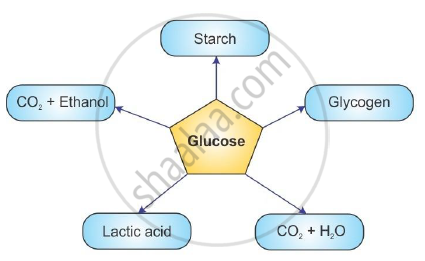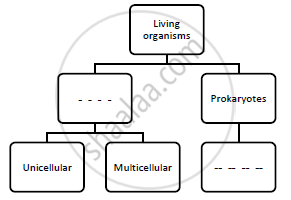Advertisements
Advertisements
प्रश्न
What are the main energy sources of living organisms?
उत्तर
Carbohydrates, fats and lipids are the main sources of energy in living organisms.
APPEARS IN
संबंधित प्रश्न
Given below are the end products of different reactions involving glucose. Write the appropriate end product in front of the following:

(1) Anaerobic reaction =
(2) Reaction in human muscles =
(3) Aerobic respiration
(4) Reaction in plant cells =
(5) Reaction in liver =
Which of the following type of energy is used by living organisms to perform vital life processes? Kinetic energy, Chemical energy, Potential energy, Nuclear energy
A person lives near a forest. Make a list of four items which he can get from the forest to meet his daily needs.
Name the green dot like structures in some cells observed by a student when a leaf peel was viewed under a microscope. What is this green colour due to?
Rewrite the food-chain given below with correct sequence.
Grasshopper– Snake– Paddyfield– Eagle– Frog
Complete the following flowchart.
Fill in the blank and explain the statement.
Our muscle cells perform ______ type of respiration during exercise.
Write definition
Nutrients
Write the definition.
Proteins
Write definition.
Glycolysis
Distinguish between Glycolysis and TCA cycle.
Give scientific reason.
Oxygen is necessary for complete oxidation of glucose.
Explain the glycolysis in detail.
Write the forms to which following food materials are converted after digestion.
1.Milk
2. Potato.
3. Oil.
4. Chapati
Answer in detail.
How all the life processes contribute to the growth and development of the body?
Answer in detail.
Explain the Kreb's cycle with reaction.
Complete the following chart and state which process of energy production it represents:

Explain the ‘inhalation’.
Find an odd one out.
Choose the forms in which most plants absorb nitrogen
- Proteins
- Nitrates and Nitrites
- Urea
- Atmospheric nitrogen
How do the guard cells regulate opening and closing of stomatal pores?
Why do fishes die when taken out of water?
In each of the following situations what happens to the rate of photosynthesis?
- Cloudy days
- No rainfall in the area
- Good manuring in the area
- Stomata get blocked due to dust
Match the terms in Column (A) with those in Column (B)
| Column (A) | Group (B) |
| (a) Trypsin | (i) Pancreas |
| (b) Amylase | (ii) Liver |
| (c) Bile | (iii) Gastric glands |
| (d) Pepsin | (iv) Saliva |
Classify vitamins according to their solubility.
Give one example of each of the classifications of vitamins.
